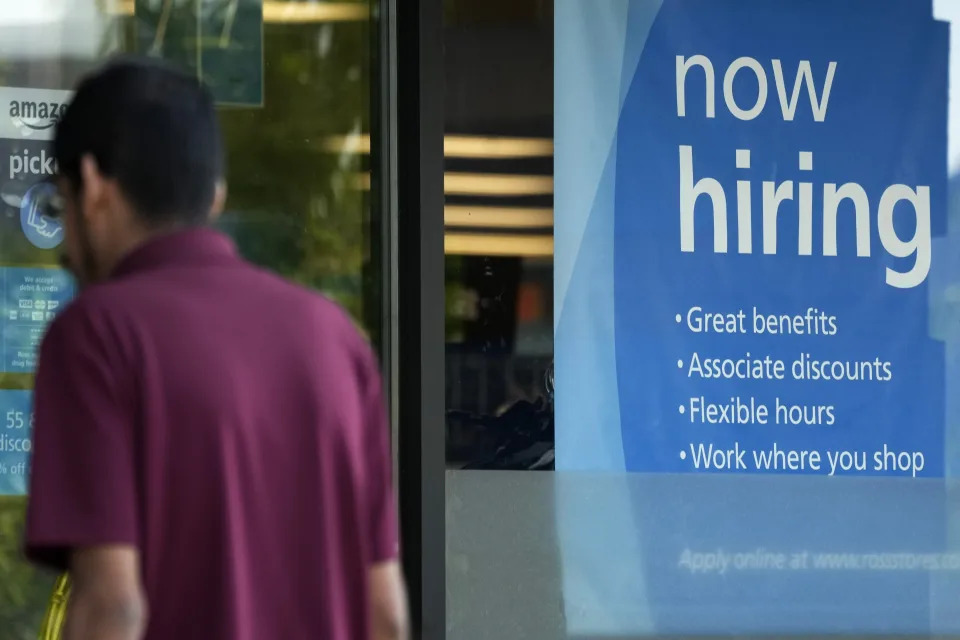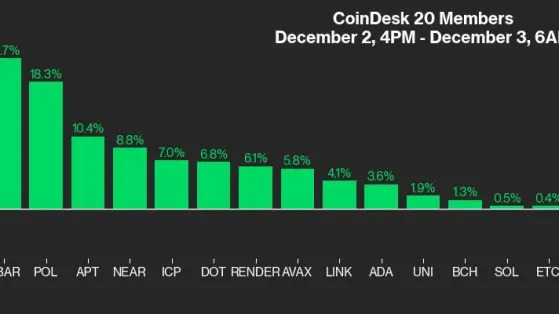New data from ADP released Thursday showed the private sector added its fewest jobs in a month since January 2021, signaling a cooling labor market.
ADP's National Employment Report for August showed 99,000 jobs were added in the month, well below economists estimates for 145,000 and fewer than the 122,000 jobs added in July. The August data marked the fifth straight month payroll additions had slowed from the month prior.
ADP chief economist Nela Richardson told Yahoo Finance on a call with reporters Thursday morning that the data shows a labor market that is “undoubtedly cooling.”
But Richardson added there are other factors to consider when assessing how weak the labor market truly is. Richardson said that when her team speaks with clients, they are still hearing that churn in the labor force — people leaving their job for another either by choice or not — remains “quite low.”
To Richardson's point, new data also out Thursday from the Labor Department showed 227,000 weekly unemployment claims were filed in the week ending Aug. 31, a decrease from the 232,000 seen the week prior and lower than the 11-month high at the end of July.
"People are also staying in their jobs, she said. “They're not quitting, we're not in the Great Resignation, and so there's less need to hire.
The data comes as investors watch for signs of how quickly the Federal Reserve could bring down interest rates as inflation eases. A slowdown in the job market has moved into focus as a key factor for consideration.
In a speech in late August, Fed Chair Jerome Powell said the cooling in the labor market has been "unmistakeable." Powell added the downside risks to the central bank's mandate for full employment have risen.
"It seems unlikely that the labor market will be a source of elevated inflationary pressures anytime soon," Powell said. "We do not seek or welcome further cooling in labor market conditions."
How does the labor market affect inflation?
More signs of a slowing labor market were seen in a data release Wednesday from the Bureau of Labor Statistics. The Job Openings and Labor Turnover Survey (JOLTS) showed there were 7.67 million jobs open at the end of July, a decrease from the 7.91 million seen in June. This marked the lowest number of job openings since January 2021.
Also in the report: The ratio of unemployed workers to job openings fell to 1.07 in July, below the average seen in 2019 before the pandemic disrupted the labor market and about in line with data from April 2018.
Renaissance Macro head of economic research Neil Dutta wrote on X , formerly Twitter, that the decline in the ratio is "yet another sign that labor demand has cooled, going a bit beyond where we were just before the pandemic."
This has reignited debate over how aggressively the Fed will be in its first interest rate cut. As of Thursday morning, markets were pricing in a 45% chance the Fed cuts rates by 50 basis points by the end of its September meeting, up from a 34% chance seen just a week ago, per the CME FedWatch Tool.
Still, Richardson predicted the central bank would likely opt to be "slow and steady" and lean toward a 25 basis point interest rate cut.
"I don't think that there's anything in the ADP numbers, and I suspect what you'll hear from [Bureau of Labor Statistics] tomorrow, that changes the natural inclination of the Fed to be data dependent and moderated in its policy," Richardson said.
The other report Richardson referenced will come on Friday, with the August jobs report set for release at 8:30 a.m. ET from the Bureau of Labor Statistics.
Consensus expectations among economists surveyed by Bloomberg project the US economy added 165,000 jobs in August while the unemployment rate ticked down to 4.2%. This would mark the first decrease in the unemployment rate since March.

Josh Schafer is a reporter for Yahoo Finance. Follow him on X @_joshschafer .





